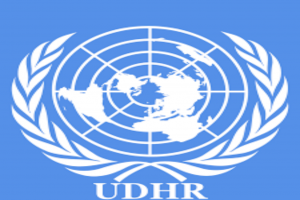“Where, after all, do universal human rights begin? In small places, close to home – so close and so small that they cannot be seen on any maps of the world. […] Unless these rights have meaning there, they have little meaning anywhere. Without concerted citizen action to uphold them close to home, we shall look in vain for progress in the larger world.”
—Eleanor Roosevelt
The Declaration was proclaimed on 10th December 1948 by the United Nations General Assembly and was designed to prevent the repetition of the horrific human rights violations committed during World War II. The Declaration which was drafted by a diverse group of people from Australia, Canada, Chile, China, France, Lebanon, the Soviet Union, the United Kingdom and the United States remains as much relevant today as it was in 1948 if not more in light of the issues such as:
- Growing global migrant crisis;
- Terrorism and extremism and the threat to democracy;
- Threat to global multilateral frameworks for human rights and peace;
- Challenges to privacy rights and data protection in the Internet age;
- Threat to right to life, food, water and housing due to climate change;
- Global, national and urban inequalities;
- Issues of sexual assault, rape, exploitation, violence against women and pay gap;
- Challenges to freedom of expression; etc.
UDHR is a milestone document that proclaimed the inalienable rights which everyone is inherently entitled to as a human being regardless of race, colour, religion, sex, language, political or other opinion, national or social origin, property, birth or another status. It sets out universal values and a common standard of achievement for all peoples and all nations. It establishes the equal dignity and worth of every person.
It is interesting to know that:
- Eleanor Roosevelt was the first chair of the fledgling United Nations Commission on Human Rights;
- Chang Peng-Chun, the Chinese playwright, philosopher and diplomat was vice-chair of the commission;
- Dr Charles Malik, the Lebanese academic, philosopher, and ethicist who, as rapporteur, played a vital role in shaping the ethical contents of the UDHR;
- Rene Cassin, a jurist, judge, and legal advisor to Charles de Gaulle, played a major drafting role.
To highlight what the Universal Declaration means for people in their everyday lives, UN Human Rights had launched a year-long campaign building on the existing Stand Up for Human Rights campaign which culminated on 10 December 2018.
UDHR’s principles are embedded in the Constitution and laws of over 90 countries. It holds a Guinness Book of World Records as the most translated document. It has been translated in more than 500 languages ranging from Abkhaz to Zulu. It went from 298 languages in 2000 to 370 in 2010 to 500 today. The achievements which UDHR celebrates include among others:
- 18 treaties and optional protocols advancing human rights have been agreed since 1948;
- 198 countries now allow women the right to vote, compared to 91 countries in 1948;
- 104 countries have now outlawed capital punishment, compared to only 9 in 1948;
- 57% of countries have a national human rights institution today;
- 111 countries have adopted freedom of information laws & policies, at least 15 of them in the past 4 years; etc.
Having said that, there are some major challenges before the UN and if it does not overcome those challenges, UDHR’s principles would be nothing but utopia. Some of such challenges include:
- 880 million people today live in urban slums;
- 1 in 10 children worldwide are still engaged in child labour;
- 65 million men, women and children were forced away from their homes by war and persecution in 2015, which is 1 in every 113 people;
- 101 journalists were killed in 2016, 1 death every 4 days;
- Almost 1 in 3 people in detention are held without being tried or sentenced for a crime;
- 59 million children were not in primary school in 2014. 52% of these were girls;
- Women represent only 24% of national parliament members;
- 700 million women today were married before age 18 and 250 million were married before age 15; etc.
It is heartening to know that UDHR has spawned many other important international treaties, including the International Convention on the Elimination of All Forms of Racial Discrimination (179 states); the International Convention on the Elimination of All Forms of Discrimination Against Women (189 states); the United Nations Convention on the Rights of the Child (196 states); and the United Nations Convention Against Torture (162 states). Furthermore, the UDHR continues to inspire new treaties. One of the most recent, the Convention on the Rights of Persons with Disabilities, is also one of the most rapidly ratified, with 175 states signing onto it in its first decade, and the International Convention for the Protection of All Persons from Enforced Disappearance, which entered into force in 2010, has so far been ratified by 58 states.
Not many people know non-Western female delegates played an important role in drafting the Declaration. These include Hansa Mehta from India, Shaista Begum Ikramullah from Pakistan and Minerva Bernardino from the Dominican Republic.
While its promise is yet to be fully realized, the very fact that Universal Declaration of Human Rights has stood the test of time is a testament to the enduring universality of its perennial values of equality, justice, and human dignity.

